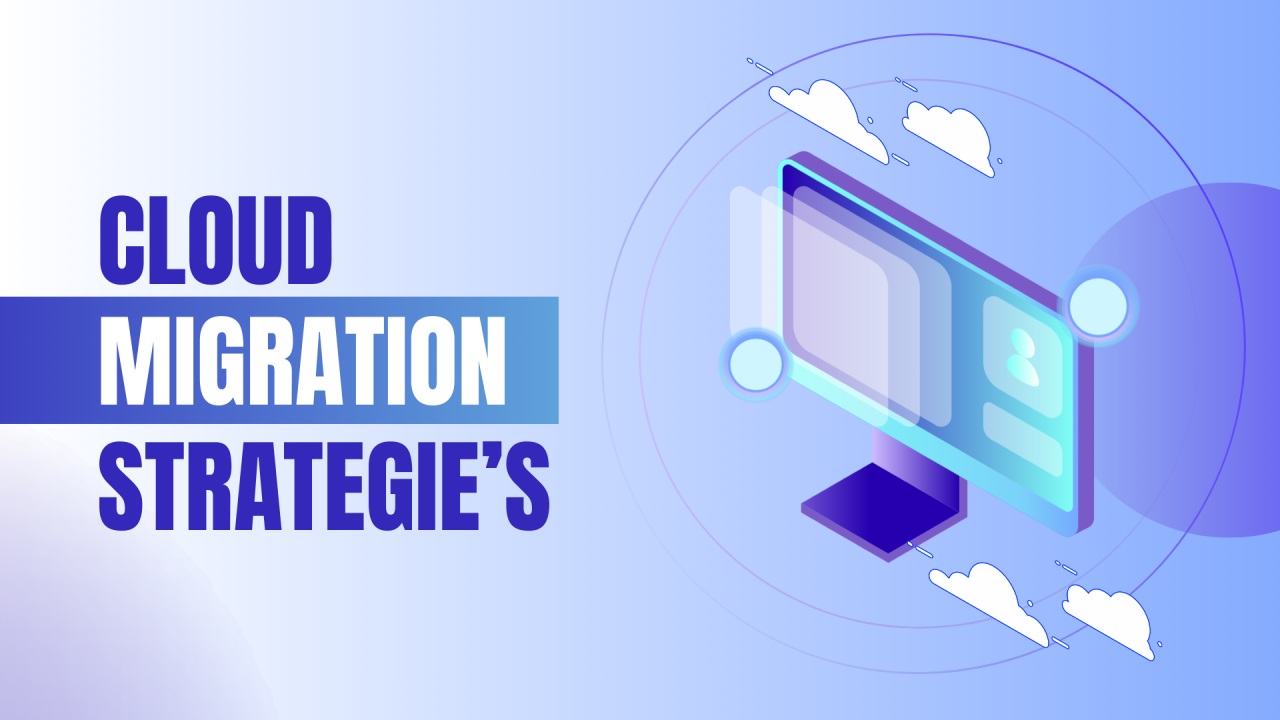Top Cloud Migration Strategies: Ensuring a Smooth Transition in 2024
 Harsh Thakkar
Harsh Thakkar
In 2024, businesses are increasingly shifting their operations to the cloud to enhance agility, reduce costs, and improve scalability. However, successful cloud migration requires careful planning and execution to avoid common pitfalls. This guide explores top strategies to ensure a seamless transition to the cloud while maximizing benefits and minimizing risks.
Assessment and Planning
Before embarking on a cloud migration journey, it’s crucial to conduct a thorough assessment and develop a comprehensive plan.
Current State Analysis: Evaluate existing infrastructure and applications to identify dependencies and potential challenges.
Goal Definition: Clearly define migration objectives, such as cost savings, improved performance, or enhanced security.
Risk Assessment: Identify and mitigate risks associated with migration, such as data loss, downtime, or compliance issues.
Choosing the Right Cloud Provider
Selecting the appropriate cloud provider plays a pivotal role in the success of your migration strategy.
Comparison of Providers: Compare leading cloud providers (AWS, Azure, Google Cloud) based on factors like services offered, pricing models, and geographic availability.
Vendor Lock-in Considerations: Implement strategies to mitigate vendor lock-in risks by adopting cloud-agnostic solutions or multi-cloud architectures.
Case Studies: Highlight successful migrations to different cloud platforms and lessons learned from real-world scenarios.
Data Migration Strategies
Efficiently migrating data to the cloud is essential for maintaining business continuity and ensuring data integrity.
Data Classification: Categorize data based on sensitivity and regulatory requirements to determine appropriate migration methods.
Migration Methods: Explore different migration approaches such as lift-and-shift, re-platforming, and re-architecting based on application requirements.
Tools and Best Practices: Recommend tools and best practices for secure and efficient data transfer, ensuring minimal disruption during migration.
Application Migration
Migrating applications to the cloud requires careful planning and consideration of technical and operational aspects.
Prioritization: Determine the sequence of application migration based on factors like criticality, complexity, and interdependencies.
Refactoring and Optimization: Optimize applications for cloud environments to leverage native cloud services and improve performance and scalability.
Testing: Implement robust testing strategies to validate application functionality and performance post-migration, ensuring seamless user experience.
Security and Compliance
Maintaining robust security measures and compliance during and after migration is paramount to safeguarding data and maintaining regulatory adherence.
Security Best Practices: Implement encryption, access controls, and monitoring tools to protect data from unauthorized access and cyber threats.
Compliance Considerations: Address regulatory requirements (e.g., GDPR, HIPAA) by integrating compliance frameworks and practices into the migration process.
Continuous Monitoring: Establish ongoing monitoring and auditing processes to detect and respond to security incidents promptly.
Performance Optimization
Optimizing cloud resources and leveraging cloud-native services can enhance performance and operational efficiency.
Cloud-Native Services: Utilize platform-as-a-service (PaaS) and infrastructure-as-a-service (IaaS) offerings to optimize resource utilization and scalability.
Resource Management: Optimize resource allocation and cost management strategies to minimize operational expenses and maximize ROI.
Scaling Strategies: Plan for future growth and scalability requirements by implementing automated scaling and performance tuning mechanisms.
Training and Change Management
Preparing your team for the transition to the cloud is essential for maximizing productivity and minimizing resistance to change.
Employee Training: Provide comprehensive training programs to equip employees with the skills and knowledge required to operate effectively in the cloud environment.
Change Management: Implement change management strategies to facilitate smooth transitions, address resistance, and foster a culture of continuous improvement.
Feedback and Iteration: Solicit feedback from stakeholders and end-users to identify areas for improvement and refine migration strategies iteratively.
Conclusion
Successfully migrating to the cloud requires meticulous planning, strategic execution, and continuous optimization. By adopting these top cloud migration strategies, organizations can navigate the complexities of cloud adoption, unlock new opportunities, and achieve sustainable growth in 2024 and beyond.
I hope you found it insightful and helpful. I would love to connect with you on LinkedIn to share more knowledge and engage in meaningful conversations about DevOps and related technologies.
For further discussions or collaborations, you can reach me via
Email : harsh.thakkar0369@gmail.com
Website : harshthakkar.netlify.app
Looking forward to connecting and learning together ✨
Subscribe to my newsletter
Read articles from Harsh Thakkar directly inside your inbox. Subscribe to the newsletter, and don't miss out.
Written by

Harsh Thakkar
Harsh Thakkar
👨💻Tech Enthusiastic :: 💡Cloud & DevOps :: 🙋♂️ Let's Connect 🚀






